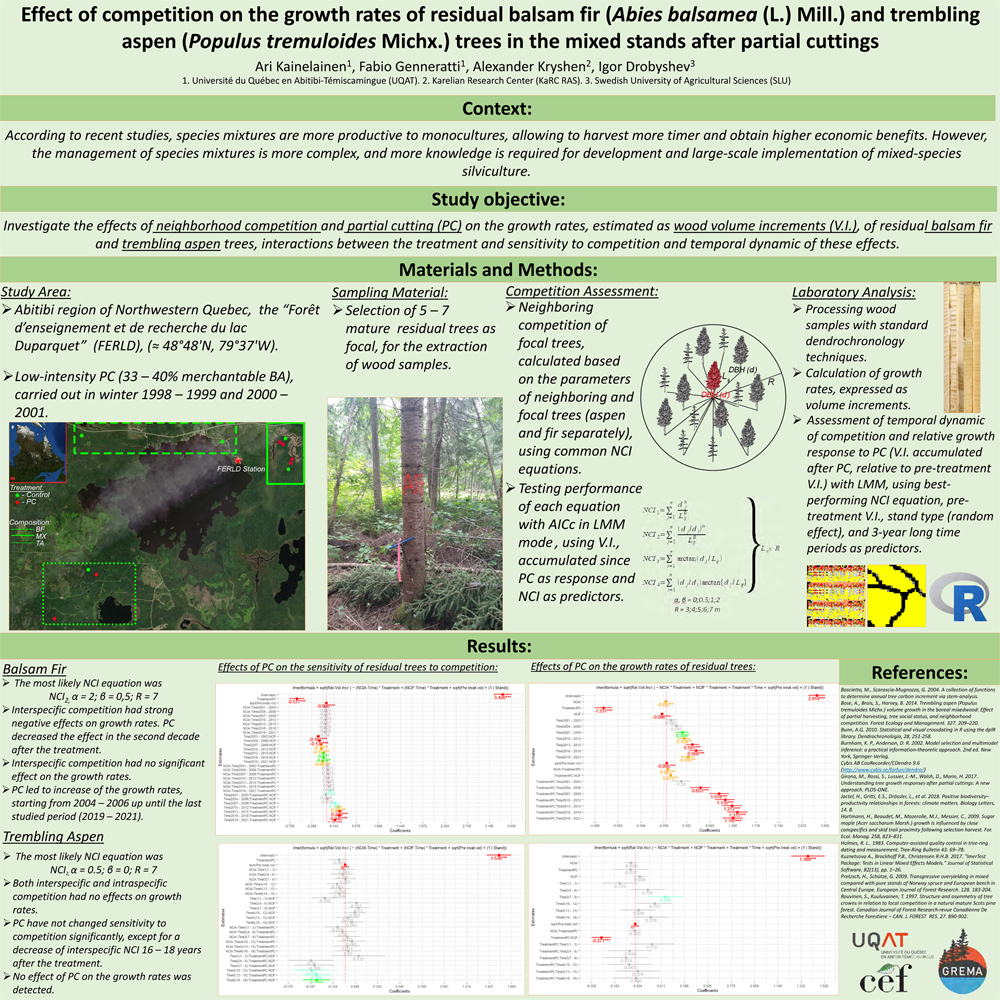
The recent studies indicate that species mixtures are often more productive, than monodominant stands, allowing to harvest more timber and obtain higher economic benefits. However, the management of mixed stands is more complex, than the management of monocultures, and the existing knowledge gaps, in this regard, hinder its adoption and large-scale application. The response of residual trees to harvest is driven by the change of neighborhood environments and occur at the individual-tree scale, highlighting the importance of the individual-tree growth models and the assessment of neighborhood competition. Additionally, majority of existing studies relay on standard forestry techniques, such as height or diameter measurements after harvest to evaluate the response of residual trees to cutting. In the current study we examined the effect of low-intensity partial cuttings (PC) on the growth rates of residual balsam fir (Abies balsamea (L.) Mill.) and trembling aspen (Populus tremuloides Michx.) trees in the mixed stands by assessing annual volume increments over a span of two decades since harvest in the Abitibi region of northwestern Quebec, as a function of treatment, pre-treatment volume, neighborhood competition, stand composition and time since harvesting treatment. Competition effects on the growth dynamic have been examined by the calculation of a variety of common neighborhood competition indexes (NCI) in the surroundings
of residual trees. The effects of size, distance, and the area, within which residual trees are sensitive to competition have been quantified. Our results showed contrasting effects of PC and competition effects, depending on the species identity. Balsam fir was more sensitive to intraspecific competition, located within an area with a radius of 7 m from targeted trees, while trembling aspen was more sensitive to interspecific competition from neighbouring fir trees within an area with a radius of 3 m. PC resulted in a decrease of interspecific competition effects on the growth of fir in the second decade since harvest, but had no effect on the sensitivity to intraspecific competition. On the other hand, PC increased sensitivity of aspen to interspecific competition, but decreased sensitivity to intraspecific competition. These effects has become significant in 7-9 years after harvest and persisted throughout a decade. Balsam fir showed positive growth response to PC, that lasted over a span of two decades. No effect of PC on the growth rates of trembling aspen has been observed. Our results deepen our understanding of the effects of partial harvest on the growth dynamic and neighborhood competition effects, occurring at the individual-tree scale, and should stimulate the development of mixed-species management.
